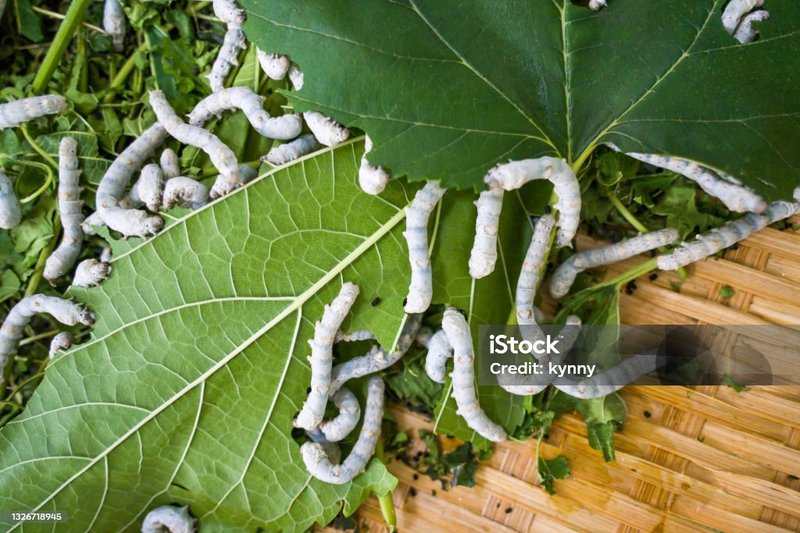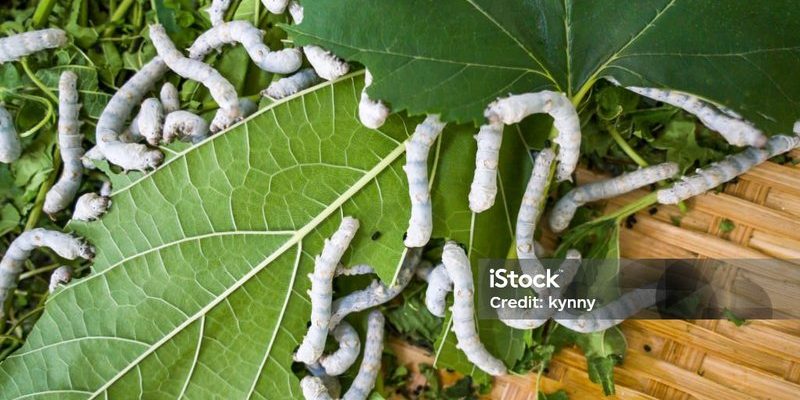
Raising silkworms isn’t just about getting them; it’s about providing them with everything they need to grow strong and healthy. Think of silkworms like toddlers—they’re picky eaters, and what you feed them matters a lot. Mulberry leaves are their favorite snack, packed with the nutrients they require. But not all mulberry leaves are created equal! You’ll want to pick and prepare them in the right way to ensure your silkworms are happy. Ready to dive in? Let’s explore how to prepare mulberry leaves for silkworm feeding.
Choosing the Right Mulberry Leaves
Before you can feed your silkworms, you need to start by picking the right leaves. Not every leaf is suitable. Here’s what you should look for:
- Variety: The main types of mulberry trees are white, black, and red. White mulberry (Morus alba) is the most common choice for silkworms. It’s like the classic recipe that never goes out of style!
- Freshness: Choose young, fresh leaves that are vibrant in color. They should be tender and not too tough. Imagine biting into a ripe piece of fruit versus a dried one—there’s simply no comparison!
- Avoid Damage: Steer clear of leaves with spots, holes, or that appear wilting. These blemishes can indicate disease or pests, which isn’t something you want to introduce to your silkworms.
Once you’ve gathered your leaves, it’s time to prep them for feeding, which leads us to the next step.
Washing Your Mulberry Leaves
Cleaning your mulberry leaves is crucial. Dirt, insects, or chemicals can harm your silkworms, so a little scrub is necessary. Here’s how to wash them properly:
1. **Rinse Under Cold Water:** Place the leaves in a colander and rinse them under cold running water. Think of it like giving them a refreshing shower after a long day.
2. **Gentle Handling:** Be gentle while washing to avoid tearing the leaves. Silkworms are sensitive, and torn leaves can spoil quickly.
3. **Pat Dry:** After rinsing, gently pat the leaves dry with a clean cloth. You want them damp, not soaking wet, as excess water can lead to mold.
Keeping your leaves clean is not just a formality; it’s a necessity for keeping your silkworms healthy.
Cutting Mulberry Leaves for Feeding
Now that your leaves are clean, it’s time to cut them. The way you cut the leaves can actually impact how well your silkworms eat. Here’s what to do:
– **Size Matters:** Cut the leaves into smaller, manageable pieces. Think about how a kid prefers bite-sized snacks—your silkworms will appreciate it too!
– **Avoid Overprocessing:** Don’t shred the leaves too finely. Leaving a bit of texture will make it easier for silkworms to grasp and munch on. Picture yourself eating a salad; you want it chopped but not pureed.
– **Uniformity is Key:** Try to keep the sizes consistent. This ensures that all your silkworms get an equal chance to eat, helping them grow at a similar pace.
It might seem like a small detail, but the cutting process can affect feeding efficiency and, ultimately, the growth of your silkworms.
Storing Mulberry Leaves
If you’ve prepared more leaves than your silkworms can handle in one sitting, proper storage is essential. Here’s how to keep them fresh:
1. **Use a Damp Cloth:** Wrap the leaves in a damp cloth before placing them in a container. This keeps them from drying out. It’s much like how we store our greens in the fridge to keep them crisp.
2. **Keep Cool:** Store the container in a cool place, ideally in the refrigerator if you’re not using them right away. Avoid storing them in direct sunlight or warm areas, as heat can cause them to wilt quickly.
3. **Check Regularly:** It’s a good idea to check on your stored leaves daily. If you notice any signs of wilting or spoilage, remove those leaves right away to prevent them from affecting the others.
Proper storage helps you ensure that you always have fresh food for your silkworms, promoting healthier growth.
Feeding Your Silkworms
Now comes the exciting part—feeding your silkworms. This is where all your preparation pays off. Here’s how to do it:
– **Timing Matters:** Feed your silkworms at the same time each day. Like humans, they thrive on routine. You’ll notice that they become more eager to eat.
– **Portion Control:** Start with a small portion and observe how quickly they devour it. If they finish it fast, you can gradually increase the amount. Just like us, they have their own appetites!
– **Monitor Their Behavior:** Keep an eye on how they react to the leaves. If they don’t seem interested, check the freshness or consider if they’re more selective about their meals—perhaps they prefer younger leaves today.
Feeding can be a delightful bonding time between you and your silkworms.
Common Problems and Solutions
Even with careful preparation, you might run into some hiccups while feeding your silkworms. Let’s tackle a few common issues:
– **Leaves Wilting Quickly:** If your leaves are wilting faster than expected, it could be due to high temperatures. Ensure they’re stored in a cool place and check for any signs of spoilage before feeding.
– **Silkworms Not Eating:** If your silkworms are ignoring the leaves, it could be that the leaves are too old or damaged. Always opt for fresh, clean leaves to maintain their appetite. You might even try varying the leaf size to see if that sparks their interest.
– **Pest Issues:** Occasionally, you may find pests on your leaves. It’s crucial to inspect them carefully. If you find any bugs, gently rinse the leaves again or discard the affected ones to protect the rest of your silkworms.
Being aware of these issues and how to solve them can save you time and help your silkworms thrive.
Preparing mulberry leaves for silkworm feeding is a meticulous yet rewarding process. When you take the time to choose the right leaves, clean them properly, and store them effectively, you’re setting your silkworms up for success. Remember, these little creatures rely entirely on you for nourishment, so every step matters.
Embrace the journey! As you watch your silkworms grow and thrive on those lush mulberry leaves, you’ll not only gain knowledge but also a sense of fulfillment that comes from nurturing life. Happy feeding!

